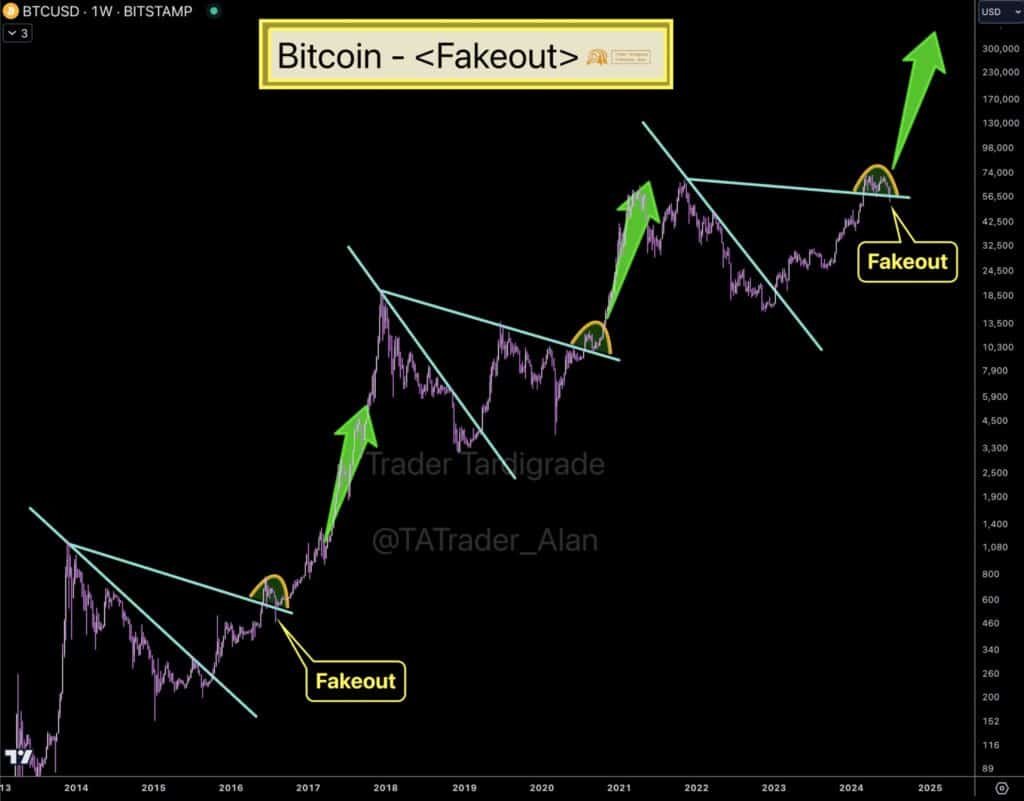Bitcoin (BTC) surged by 6.40% on July 6, reaching $56,975 after hitting a five-month low the previous day. This recovery shows that traders are overcoming the bearish effects of Mt. Gox’s $8 billion BTC reimbursement and recent BTC selloffs by the U.S. and German governments.
Over the past 24 hours, top crypto analysts and influencers have worked to calm panic sellers. Ki Young Ju, founder and CEO of CryptoQuant, reminded traders that the governments’ $8 billion BTC is only 4% of the total $225 billion that has flowed into Bitcoin since 2023. This suggests that the Bitcoin market has enough liquidity to absorb government-led BTC selloffs. There are concerns that the German government may dump its remaining Bitcoin holdings, about 42,000 BTC as of July 6, in the coming days.
Govt #Bitcoin selling is overestimated.
— Ki Young Ju (@ki_young_ju) July 5, 2024
$224B has flowed into this market since 2023. Government-seized BTC contributes about $9B to the realized cap.
It's only 4% of the total cumulative realized value since 2023. Don't let govt selling FUD ruin your trades. pic.twitter.com/12fy2sKsXH
Independent market analyst Trader Tardigrade likens the current Bitcoin selloff to past black swan events. These led to sharp rebounds and extended bull cycles. He noted that in 2016, 2020, and 2024, Bitcoin moved in the same pattern. After reclaiming above the trendline, a bull run followed. Analyst Rekt Capital argues that the current selloff is part of the typical cycle after a Bitcoin halving event. In this trend, Bitcoin often drops significantly for several months before the reduced supply impacts the market, leading to a strong upward trend.

Bitcoin’s sharp recovery today also takes cues from the U.S. stock market’s rally to a record high. In a post-holiday session with thin trading volume, the S&P 500 reached its 34th record high of the year. Equities rebounded after data showed a slowdown in U.S. hiring and the highest jobless rate since 2021. Wall Street bets now point to a 72% probability of a rate cut in September, up from 55.4% a month ago. Rate cuts are typically bullish for Bitcoin and other riskier assets. They reduce the opportunity cost of holding lower-yielding U.S. Treasury notes.
Bitcoin exchange-traded funds (ETF) attracted $143.1 million on July 5 when the U.S. jobs data was released. Earlier in the week, these ETFs had seen two days of consecutive outflows. Bitcoin’s price recovery is also accompanied by a strong jump in its funding rates in the futures market, even though open interest (OI) has declined significantly. As of July 6, Bitcoin futures’ funding rate was net positive at 0.178% per week, up from 0.044% per week two days ago. Meanwhile, OI dropped to around $28 billion from $31.64 billion in the same period.
Traders are confident in the upward price movement and are willing to pay higher rates to maintain their long positions. Bitcoin’s lower OI and higher funding rates indicate a phase where weaker hands are exiting their positions. More confident traders or institutions are maintaining or increasing their exposure, anticipating a price increase.









